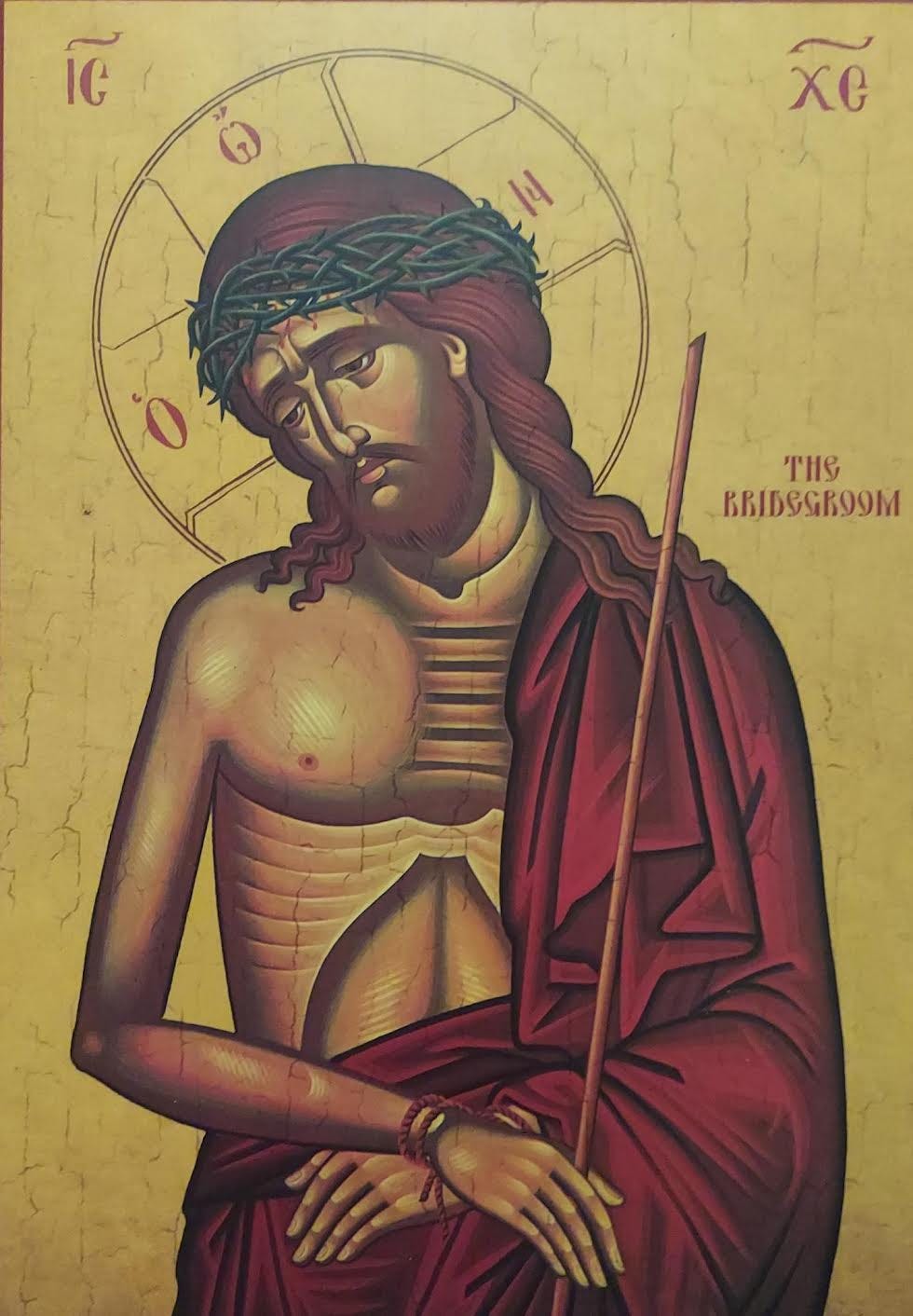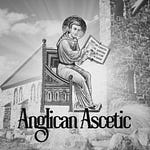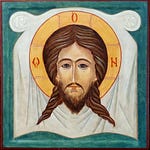As I explained last Sunday, again this Easter season the preaching will be mystagogical on an aspect of Holy Week just past. To preach that way means to look back at Holy Week so as to be drawn by the Holy Spirit more deeply into the mystery of Our Lord’s Passover. The aspect of Holy Week I want us to reflect upon is Our Lord Jesus Christ as the Bridegroom. That was the dominant image during the Liturgy on Holy Monday, Holy Tuesday, and Holy Wednesday. The very same Icon on our service bulletin this week was venerated on Holy Monday and Holy Tuesday.
As the Bridegroom is how Jesus said He would come to those who woke up after slumbering and sleeping. This Our Lord said in His Parable of the Ten Virgins, five wise and five foolish. At midnight there was a cry, “Behold, the Bridegroom! Come out to meet Him.” And those who were ready with full flasks of oil went in with Him to the marriage feast. For He knew them, and they were known by Him. They entered into the heavenly banquet, where Jesus was thirsty to eat and drink new with them in the Father’s Kingdom. And His advice to the disciples was to watch, for you know neither the day nor the hour. And it was the same commandment He gave the disciples in the Garden of Gethsemane upon finding them asleep: “Watch and pray that you may not enter into temptation.”
In the Bible, “to watch” means to be awake and knowing, and “to have a flask full of oil” means having done works of mercy, both works of devotion in prayer to Christ and works loving Christ in others. So it is by watching and having oil that the Bridegroom grants entrance to the heavenly banquet; entrance to the Marriage Feast of Bridegroom and Bride, which is holy Church.
Where we got to last Sunday is remembering by the help of Saint Thomas that the Bridegroom is His glory is wounded; that the Bridegroom in His glory has nail holes in His hands; that the Bridegroom in His glory has a tear in His side. These wounds are a permanent part of the Bridegroom, a permanent marking of His love for us. He through Whom all things are made came to accept the Cross, the afflictions, the beatings, and the judgment by Pilate. A servant strikes the Bridegroom on the head, but He endures all things that He may save mankind.
It was to help the disciples remember this that our Lord spoke in the Upper Room in our Gospel account. He said, “These are my words which I spoke to you, while I was still with you, that everything written about me in the Law of Moses and the Prophets and the Psalms must be fulfilled.” Then Saint Luke tells us that He opened their minds to understand the Scriptures. This opening is itself mystagogy: Jesus leading them by means of the Holy Spirit more deeply into the mystery of His Passover, His passing from death into life.
And then Jesus says, “Thus it is written: that the Christ should suffer and on the third day rise from the dead.” He wanted them to know firmly that He comes of His goodness to suffer. He wanted them to know that how they will always know Him and be known by Him is through suffering, is through dying to self as a sacrifice to God. He knows us through our suffering, and through our dying to self as sacrifice; and we know Him through His suffering, and through His dying to self as sacrifice to God for all mankind. Our God is He Who died on the Cross, for Christ shows us what it is to be God in the way that He dies as a human being. And we will find Him as the Bridegroom with woundedness, the Bridegroom in His suffering is how we find Him.
And we find Him, by His own commandment, in Scripture–that is, the Law (the five books of Moses), the Prophets, the Psalms, and all the writings which are called today (someone erroneously) the Old Testament. I say somewhat erroneously, because how can the place where the living Christ is found today be called Old? The better name is that which the Evangelists use, as well as Saint Paul: simply, the Scriptures. And we find Christ suffering all throughout Scripture: Christ suffering with Adam and Eve after their transgression; Christ suffering with Cain, after he murdered Abel; Christ suffering with Noah and his family, as Christ bemoaned the wicked ways of everyone else in the world; Christ suffering with Moses, because of the continual disobedience of the sons of Israel; Christ suffering with the Prophets, as the sons of Israel became unholy and arrogant. Our Lord’s suffering of His Passion on the Cross is the highest, most profound moment in all human history; it is the recapitulation of all the suffering He endured in Scripture as His people forgot time and again the inestimable and innumerable benefits procured unto us by Him; forgot that of His goodness He chose to suffer.
All of what the Bridegroom has done is for our salvation: His sacrifice entirely that we might be redeemed, and be gather by Him our Bridegroom into the Marriage Feast: the Bride which is the Church, forever entwined with the Bridegroom, Jesus Christ; Who lives and reigns with the Father in the unity of the Holy Ghost, ever one God unto the ages of ages. Amen.











Share this post